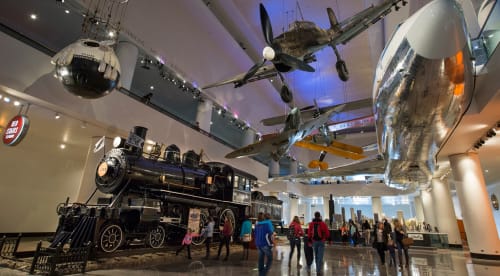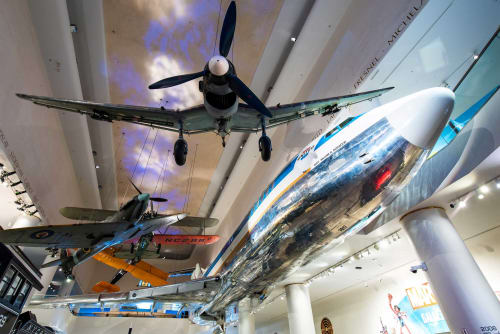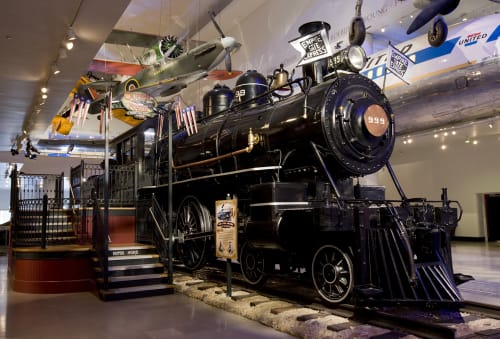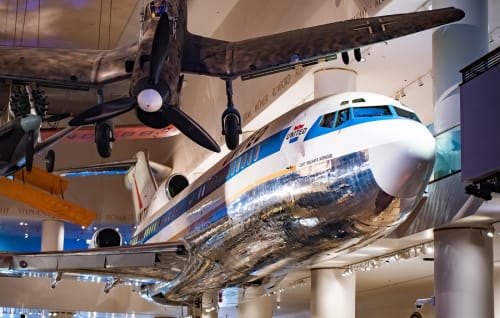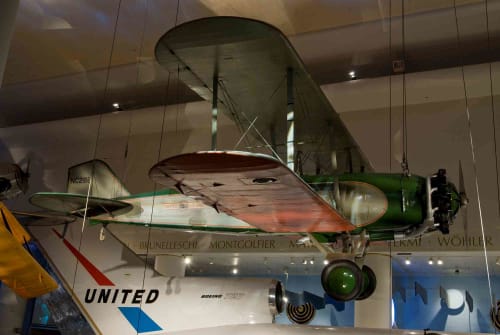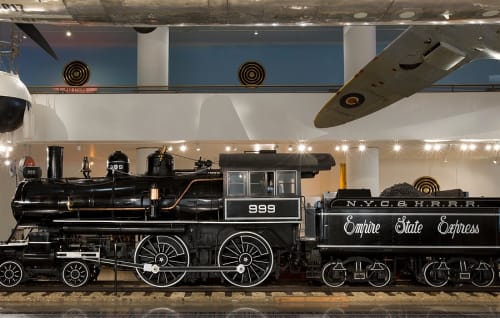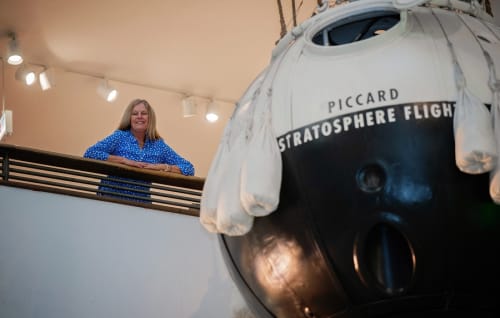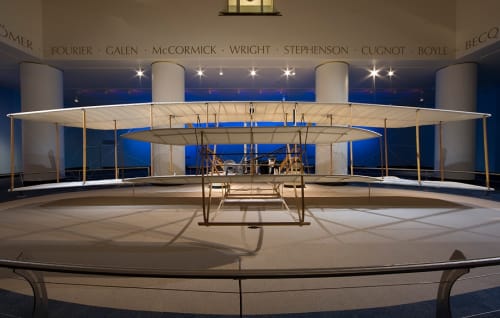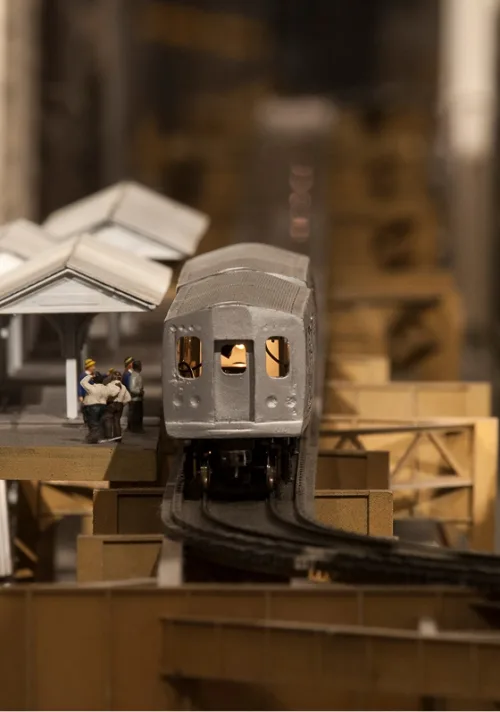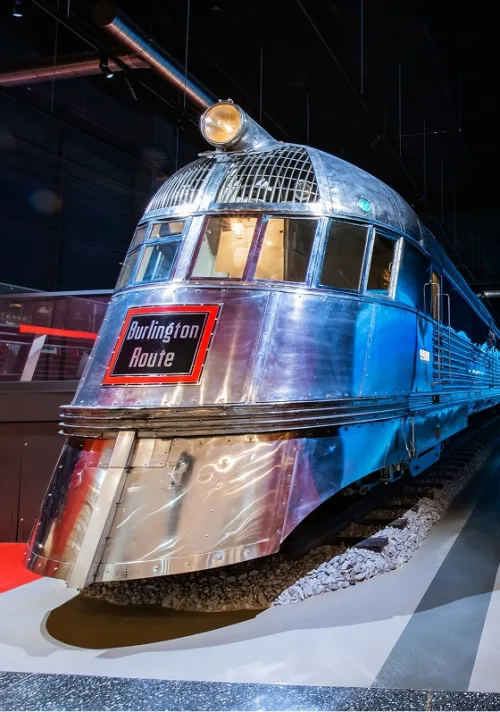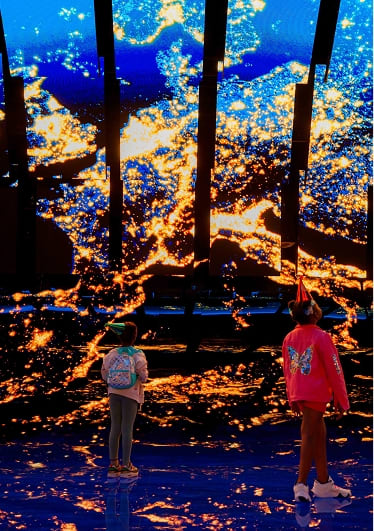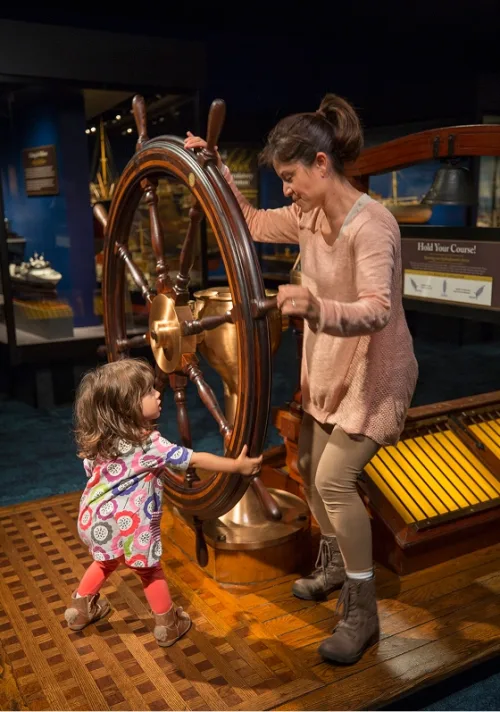Historic aircraft
1917 Curtiss JN-4D
The 1917 Curtiss JN-4D, or "Jenny," was a plane that greatly influenced military, recreational and commercial aviation. It popularized aviation by giving thousands of Americans their first sight of an airplane. In order to draw the public's eye, Jenny pilots put their airplanes into dramatic positions, and the Museum's plane is seen upside down, in the midst of a barrel roll.
1928 Boeing 40B
The establishment of commercial airmail service was a boon to the aviation industry and the 1928 Boeing 40B, one of two surviving planes of its kind, served as a mail transport plane. It even served as an early airliner.
1930 Texaco TravelAir Model R Racer
The 1930 Texaco TravelAir Model R Racer is a plane from the "golden age" of air racing. This TravelAir set several hundred intercity speed records in the early 1930s, including breaking Lindbergh's west-east record in 1930. To indicate speed, the TravelAir makes a swift and steep banking turn from above the Coal Mine into the East Court.
Supermarine Mark 1A Spitfire
Spitfires are often credited with winning the Battle of Britain and were flown by some of the most famous fighter pilots for the duration of WWII. The Museum's 1940 Supermarine Mark 1A Spitfire is positioned in a "cat and mouse" game with the enemy German Stuka. The Spitfire is shown in an attacking, banking position to show off its unique elliptical wings, while the Stuka is mid-dive.
1941 Junkers Ju-87R-2 Tropical Stuka
The 1941 Junkers Ju-87R-2 Tropical Stuka is one of two surviving Stukas in the world. The plane revolutionized military aviation and military warfare with blitzkrieg tactics of fast, aggressive dive-bombing to support the quick advancement of German ground troops, and the Museum's Stuka is displayed in a steep dive.
